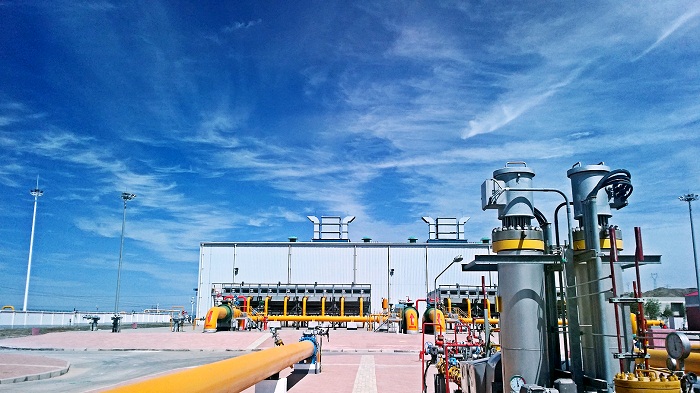
2021 Global Energy Market Situation Forecast
2021 Global Energy Market Situation Forecast: The Oil Market is Expected to " Turn Over" this Year
Time has entered 2021. As the sector most affected by the epidemic last year, the energy industry is still facing a severe situation this year.

A sudden epidemic in 2020 has brought tremendous pressure to the international oil market, but in 2021 the oil industry has started a new year with a good momentum.
The current new coronavirus vaccine is the main factor supporting optimism in the oil market. Oil traders believe that large-scale vaccination in developed countries will soon contain the epidemic, so the economies of these countries will rebound strongly and the demand for oil will increase.
It is expected that the situation in response to the epidemic in the first quarter of 2021 will remain severe, with oil demand remaining at a low level, but oil demand will gradually increase in the next few quarters.
A few days ago, the Organization of the Petroleum Exporting Countries (OPEC, OPEC) predicted that in 2021, the average global oil demand will be the main risk facing the oil market now is the continued spread of the new crown pneumonia epidemic. This is the main uncertainty, but it seems that the current The vaccinations should be enough to restore people’s lives to normal before the summer of 2021.
All in all, although there are still many problems with current demand, from various factors, oil is bullish in the short term. In view of this, 2021 is expected to be a year of "turning over" in the oil market.
Coal demand will rebound briefly
The latest report of the International Energy Agency shows that due to the new crown pneumonia epidemic, coal demand will drop sharply in 2020. It is expected that the global economic recovery in 2021 will promote a short rebound in global coal demand.
The International Energy Agency stated in its annual report "Coal 2020" that in the past two years, global coal demand has experienced a historical decline, mainly driven by unprecedented declines in coal demand in Europe and the United States. In 2019, global coal demand fell by 1.8% year-on-year, mainly due to weak power demand growth and low natural gas prices. The International Energy Agency estimates that due to the impact of the new crown pneumonia epidemic, global coal demand in 2020 will fall by 5% year-on-year.
The rebound in coal demand in 2021 will be short-lived. In 2025, coal consumption will remain at around 7.4 billion tons, which will make global coal consumption of 8 billion tons the peak of coal consumption in 2013. Although the share of coal-fired power generation in the power structure and the share of coal in the energy consumption structure are steadily declining, in an absolute sense, coal consumption will not drop rapidly in the near future.
The future of coal depends on Asia. Countries including Japan, South Korea, and India make Asian coal demand account for 75% of global coal demand. By 2025, coal demand in the European Union and the United States will fall below 10% of global coal demand, far below the 37% in 2000. This will make the impact of further changes in these market demands very limited.

Natural gas demand will recover quickly
Liquefied natural gas traders predict that global natural gas demand will quickly recover in 2021 after the new crown pneumonia epidemic has caused significant price fluctuations.
At the end of 2020, the major importing countries suffered a colder winter than previous years, the shutdown of major production centers, and the congestion of global shipping routes have jointly pushed the spot price of natural gas in Asia to the highest level since 2014, compared with April 2020. The record low is more than 6 times higher.
Some institutions predict that global natural gas demand will resume growth in 2021. Accenture's energy business managing director Manas Satapathy (Manas Satapathy) said that the rebound in natural gas demand depends largely on the performance of Pakistan, India and Bangladesh.
S&P Global Energy Information stated that after the worst of the epidemic, most of the energy transportation into Asia has returned to normal, and LNG demand in the region will rebound sharply in 2021.
The Natural Gas Exporting Countries Forum predicts that the global supply of LNG in 2021 will increase by 6% to 7% year-on-year, while the supply in 2020 will increase by 2% to 2.5% year-on-year.
In comparison, liquefied natural gas is more flexible and flexible in transportation and storage than natural gas in gaseous form. Therefore, the future is brighter.
Clean energy investment will increase significantly
Although many people expect the new crown pneumonia epidemic to have a negative impact on global economic activities, it will also significantly reduce carbon emissions, but the International Energy Agency (IEA) predicts that in 2020, global carbon emissions will only fall by 7% year-on-year.
Of the 10 largest economies in the world, 8 have committed to achieving net zero emissions by 2050.
In 2020, a total of 284 multinational companies promised to use 100% renewable energy power, compared with 13 in 2014.
These are all important drivers of renewable energy growth. On this basis, the energy consulting company IHS predicts that global capital expenditure on renewable energy will rebound to the level before the epidemic in 2021. Although the new crown pneumonia epidemic has a great impact on renewable energy projects-leading to supply chain disruptions and construction delays-Roger Dewan, vice president of IHS, said that global spending on renewable energy is expected to increase year-on-year in 2021 8.5%, the same as in 2019.
Researchers predict that by 2021, cumulative investment in the solar energy industry will account for 54% of the total cumulative investment in the renewable energy industry. These forecasts are based on Goldman Sachs’s June 2020 forecast that investment in the renewable energy industry in 2021 will account for most of the energy industry’s expenditures, and the total investment in the next 10 years is expected to reach US$16 trillion.
It is expected that by 2025, the expenditure on renewable energy will remain at this level, which will bring the total renewable energy expenditure from 2021 to 2025 to US$1.3 trillion, which is 19% higher than the expenditure from 2015 to 2019. Bloomberg New Energy Finance predicts that in order to successfully realize the energy transition, US$11 trillion will be invested in renewable energy in the next 30 years.
Due to technological progress, the cost of renewable energy has further decreased, especially in the fields of wind and solar energy. By 2025, the global benchmark capital cost of solar power generation is expected to drop by approximately 40% compared to 2017. At the same time, it is estimated that by 2025, the global benchmark capital cost of onshore wind power and offshore wind power will drop by 20% and 15% respectively from 2017.
Information source: International Energy Network
www.in-en.com


